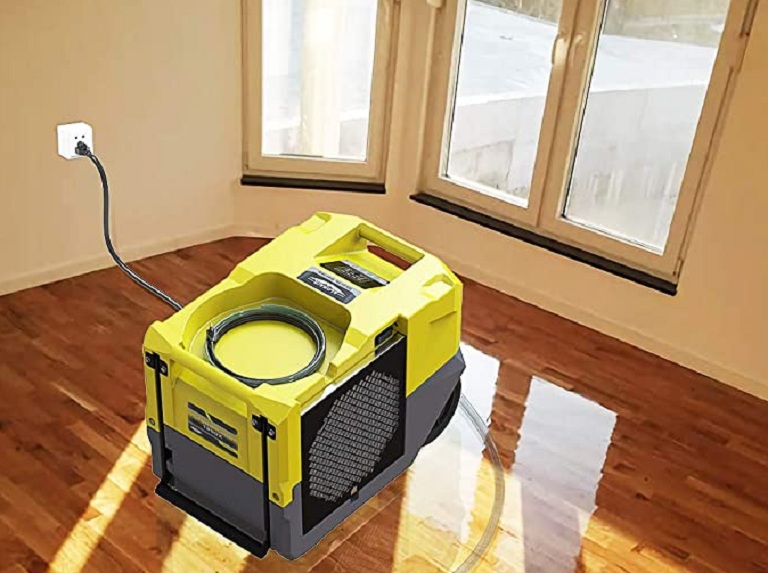Installing Your Dehumidifier the Right Way

As we all know, high indoor humidity will affect the air quality of the home. Furthermore, it can create ambient conditions for mold and dust mites to thrive. Exposure to molds and dust mites can cause various respiratory complications and trigger allergic reactions, so it should not be taken lightly.
It is for this reason that those who are affected by moisture problems should consider acquiring a dehumidifier. Nonetheless, the problem doesn’t end at getting one. The maximum utility of the equipment mainly depends on its installation and operation method. How then can you ensure that you get the most out of your dehumidifier?
7 Tips on How to Get the Most Out Of Your Dehumidifier
Positioning
The dehumidifier should face away from walls, furniture, curtains, or any other obstruction. It works best when placed centrally in a room. But since it can interfere with the normal operation in the room, the other option is to place it on a corner, but facing the room space.
One reason why you should opt to place it in the corner of a room is to minimize noise interference produced by the device.
Room Preparation
Another important but easily overlooked aspect is to ensure that the room is clean. It is advisable to vacuum the floor and remove any litter before switching it on. That is because when the dehumidifier is operating, it disperses dust into the air.
However, if your dehumidifier is equipped with filters, this step may not be necessary.
Setting the Appropriate Humidity
It is pointless to own a dehumidifier if you do not intend to control your indoor moisture within a specific range. Most studies have proved that a relative humidity of 50% is optimal for indoor air. Besides, some research results indicate that setting the moisture content below 50% may not have any obvious benefits.
While setting your dehumidifier, ensure the target humidity is 45% to 55%. It is also worth noting that very low humidity can interfere with electrical appliances since it increases the risk of creating static charges and consequently short-circuitry.
Regular Emptying Of Condensate Bucket
It is vital to ensure that the condensate bucket is emptied as frequently as possible, especially in a desiccant dehumidifier. Unknown to many users, taking long before emptying makes the moisture removal process to be relatively slow. That is because the condensed water evaporates again, and form moisture back in the air.
Frost Control
Ordinarily, the efficiency of a dehumidifier decreases in areas that have extremely low temperatures. If it is during the winter season, you can use room heaters to heat a room while removing moisture simultaneously.
An alternative would be to go for a dehumidifier that has inbuilt moisture control. However, because these devices are new on the market, their effectiveness has not been accurately determined.
Proper Timing
You should adopt the habit of using the dehumidifier when the moisture is relatively high. The classic example is after taking a shower, or if you are washing clothes in the laundry room. Apart from that, you can use it in the kitchen, while steaming food, or using a pressure cooker.
That way, you will be able to maximize its usage, since the speed of extraction is highest when air has an excess moisture content, but gradually reduces with a decrease in humidity.
Managing Costs
The dehumidifier requires several hours of running time to reduce the moisture content in a given volume of air to the required level. Therefore, if you are on a lean budget, being prudent can save you a dime, more so in electricity bills.
If you live in a state where the tariffs have varying electricity charges, you can switch it on when the tariffs are lowest.
Similarly, you should go for automatic dehumidifiers which can turn off when the desired humidity level is achieved rather than running throughout the day.
Bottom line
The first step in ensuring that you get the most out of any dehumidifier is to select the right model. It would be absurd to go for an ordinary residential dehumidifier and expect it to work in a large industrial set up or an expansive basement. You can click on this link alorair.com if you are interested in learning more about dehumidifiers so that you can make an informed decision.
Another essential factor to consider is the manufacturing technology of the dehumidifier. There are recent models such as the SLGR dehumidifiers (Super Low Grain Refrigerant). It uses refrigerant to remove moisture and has a unique air-to-air heat exchanger design. It can quickly and effectively remove moisture regardless of ambient temperature and humidity.




